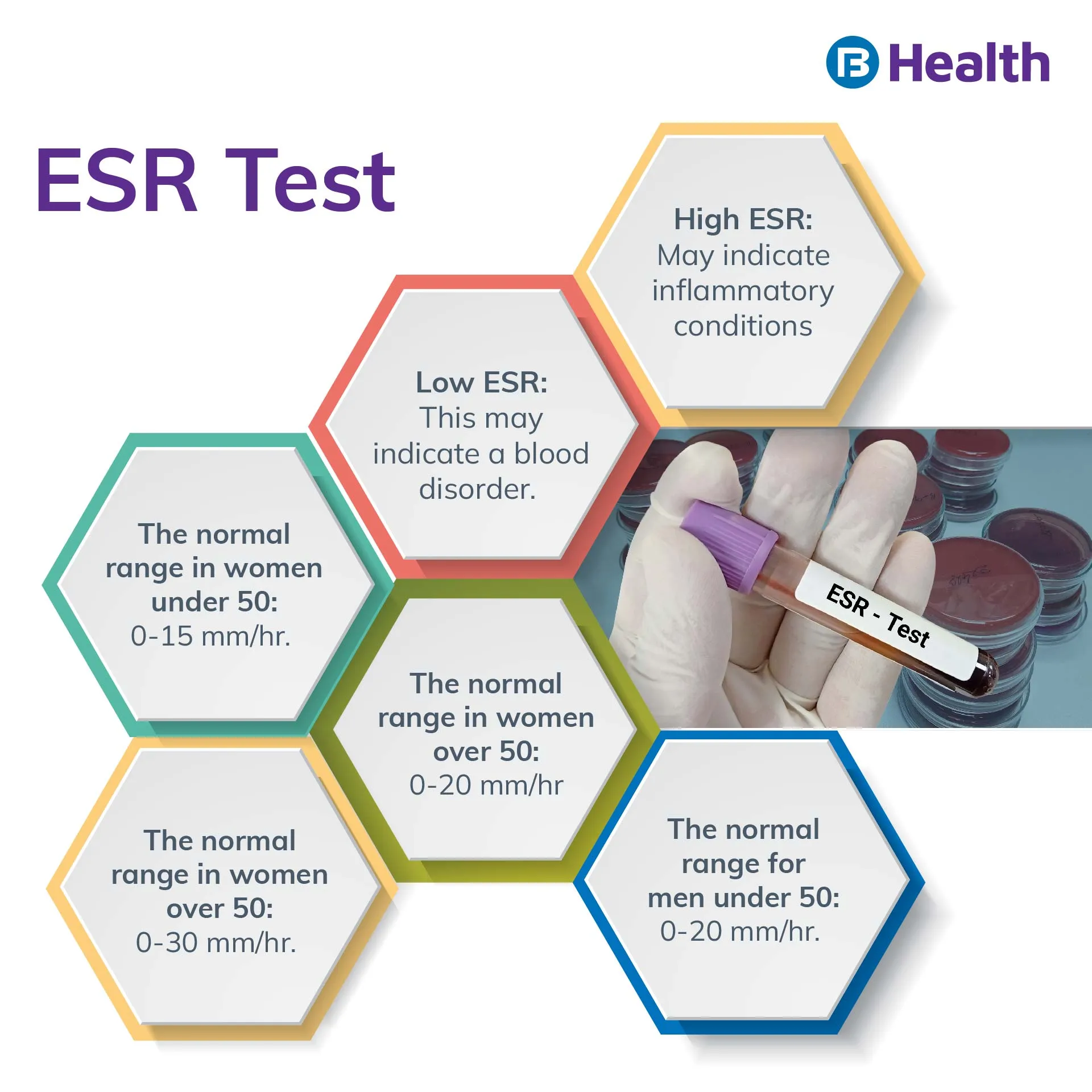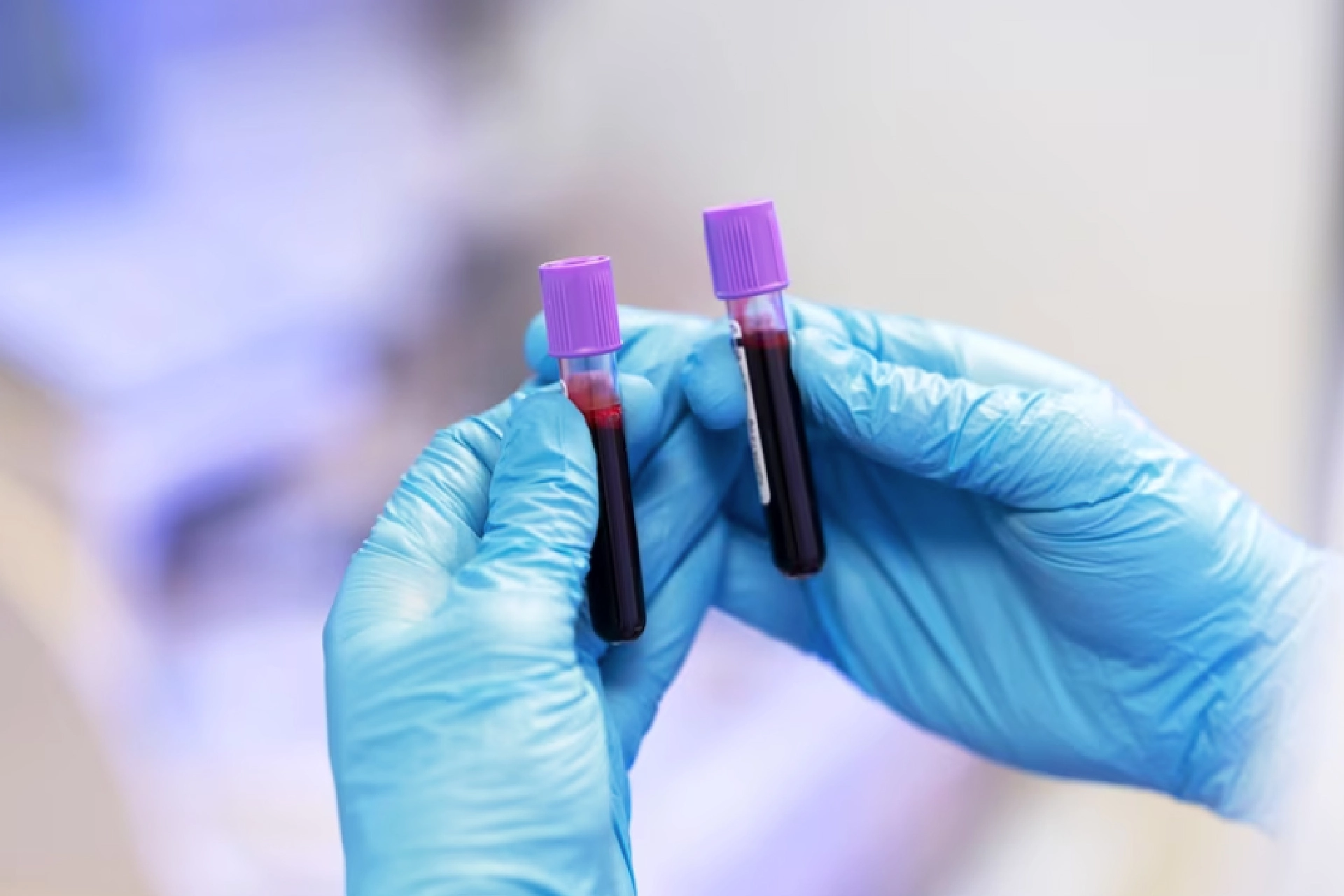Health Tests | 7 min read
ESR (Erythrocytes Sedimentation Rate) Test: Normal Range, Procedure
Medically reviewed by
Table of Content
Synopsis
ESR tests can be really helpful for doctors in the determination of any suspected inflammation in the body. It can detect the severity of a desire and helps in tracking it.
Key Takeaways
- ESR is a type of blood test used to ascertain the activation of the immune system in response to any disease or injury
- The results of the tests can get influenced by certain medicines and conditions your doctor must know about
- The normal test results are different for male and female patients
The ESR test stands for Erythrocyte Sedimentation Rate. Erythrocytes in ESR means red blood cells present in hemoglobin. An ESR is a blood test where the samples are collected in a test tube. It measures the rate at which erythrocytes get settled into the bottom of the test tube. Settling of ESR in the test tube is faster than the normal rate; it results from a response of your immune system driven by an injury or infection. Read more to know ESR normal range and how it differs in female and male.
What is ESR?
Blood tests are often used to determine the percentage of various constituents inside the blood. It is further used in diagnosing or keeping track of certain diseases or conditions, such as cholesterol tests, lipid profile tests, etc. Erythrocyte sedimentation rate (also known as sed rate) is a type of blood test that reveals any inflammation in your body.
Inflammation in cells occurs due to the activation of the immune system in response to an offending agent in your body, such as viruses, bacteria, chemicals, or in the case of any chronic inflammation. It sends inflammatory cells and cytokines to attack these offending agents. This immune system response to the offending agents or the injury can be used in discovering its severity and presence in the body.
Additional Read: Cholesterol Test: Ranges, Procedure, and ResultsWhy is ESR used?
If your doctor suspects an abnormal amount of inflammation in your body, they might recommend this blood test. Although this test does not help you determine one specific disease or condition, it does help your doctor to know whether you are experiencing inflammation or not and what needs to be further tested.
It is a way to determine for your doctor whether or not you have a disease linked to inflammation like arthritis, cancer, or other infections. The ESR test determines the cause of the inflammation or keeps track of existing conditions in your body. The doctor might ask a patient to get an ESR test for the following reasons:
- Headache
- Pain in joints
- Loss of appetite
- Weight loss or fall in health

Benefits of ESR Test
An ESR test can help your doctor determine if you have any inflammatory condition. Arthritis, vasculitis, and inflammatory bowel disease are some conditions that can be determined. An ESR can also be used to track a pre-existing condition.
If a child exhibits signs of injury or infection, a doctor may order an ESR test. ESR tests can also help doctors ascertain how well a patient's inflammation or infection treatment works.
How does the ESR Test Work?
In the ESR test, a medical practitioner measures the rate at which the red blood cells tend to settle inside a test tube at its bottom. The setting up of red blood cells is seen for an hour. At the time of inflammation, the red blood cells in your body tend to cling together, forming clumps. The formation of these clumps affects the settling rate of these red blood cells inside the test tubes.
In an ESR test, a healthcare professional will take some blood samples with the help of a needle from your arm and collect them into a vial for the test. There is no need to fast when the test has to be performed on you.
The faster the red blood cells settle to the bottom of the test tubes, the greater the chances are of the presence of inflammation. If you have chronic inflammation, it leads to more protein in your body that may cause them to settle faster. The ESR number is based on the rate at which your red blood cells settle.
Additional Read: Common Types of Blood TestPreparation for the ESR Test
ESR is a normal blood test and requires usual preparations. If you are already taking some drugs and medicines, then you should let your doctors know whether you intend to consume them before the test or not. Some drugs might change the natural results of the test. It is also advisable to let your doctor know whether you are pregnant or have your period.
A medical professional will first tie a band around the upper part of your arm to cause your vein to swell and fill with blood. Your blood will be drawn by a nurse or other medical professional, typically from a vein in your arm. After using an antiseptic to clean the area, they will insert a needle into your vein. A vial or tube will be used to collect your blood.
The bleeding will be stopped by placing a piece of gauze and a bandage over the affected area. As your blood is drawn, you might experience a slight sting. You might have a minor bruise. Possibly, it might cause bleeding, soreness, and a dizzy feeling.

What do the Results of the ESR Test Mean to You?
You should have the results within a couple of hours of the lab test receiving your samples. Your red blood cells will be put into a tall, thin tube by a lab technician, who will then measure how far they fall in an hour. Due to abnormal proteins in your blood, your red blood cells clump together when your body is inflamed.
Due to their weight, these clumps sink to the bottom of the tube faster than individual blood cells. Your body experiences more inflammation as blood cells sink more quickly.
The rate at which the red blood cells in your sample settle toward the bottom of a test tube is known as the Erythrocyte Sedimentation Rate and is measured in millimeters per hour (mm/h). After an hour, the sed rate test measures the distance in millimeters (mm) between your red blood cells and the clear liquid (plasma) at the tube's top.
What are Normal ESR Test Results?
The erythrocyte sedimentation rate considered esr normal range varies from person to person. No reference range for this test applies to everyone because age, sex, and other variables can affect ESR. However, the following range is typically accepted as a complete health solution for healthy individuals.
For males and females under 50 years, the ESR test normal range varies between 0 to 15 mm per hour in the case of males and between 0 to 20 mm per hour in the case of women. Whereas for males and females over the age of 50 years, the normal rate of ESR test varies between 0 to 20 mm per hour for ESR normal range in males and ESR normal range in females varies between 0 to 30 mm per hour.
An abnormally high ESR indicates that the red blood cells fall faster than anticipated. This typically occurs when the RBCs have a higher protein content, which causes them to adhere to one another.
There are numerous conditions that can raise the ESR. Other medical conditions can bring on an elevated ESR, but it is most frequently associated with conditions that cause inflammation. ESR levels that are unusually high have been associated with, for example:
- Anemia
- Infections
- Cancer
- Autoimmune diseases
- Kidney or thyroid condition
- Tissue injury or trauma
There are times when the ESR can be slower than usual. A slow ESR may indicate the following blood disorders:
- Polycythemia
- Sickle cell anemia
- Leukocytosis
Accuracy of the Results
Although the ESR test is highly preferable among medical practitioners for determining inflammation, many conditions can easily influence the test and affect the characteristics of the blood and thus may further influence the test results. So the details about the inflammatory disease can be obstructed by these conditions. The doctors may not be able to catch the exact information about the inflammatory disease. So while interpreting the results, your doctors may need to consider all the factors influencing the blood.
It is not always the case that you need to seek medical attention if your results are outside the normal range. Anaemia, menstruation, or pregnancy may all be associated with a moderate ESR, as opposed to an inflammatory condition. Specific medications and dietary supplements may also impact your results. They consist of aspirin, cortisone, vitamin A, and oral contraceptives. Inform your healthcare provider of any medications or dietary supplements you are taking.
Erythrocyte Sedimentation Rate test has become an efficient test for ascertaining the presence of any injury in the body or an attack of harmful agents that causes moderate to severe diseases. ESR is easy to conduct and does not require any extra preparation or precautions. The sed rate itself can suspect the severity of the disease and can further increase the pace of the process of treatment.
The Erythrocyte Sedimentation Rate test is the best test for determining inflammation. If you want to know more about the details of the ESR test or other inflammation concerns, you can consult with the experts at Bajaj Finserv Health online. They will guide you on all your queries and precautions for the test, as well as the analysis of the results.
References
Disclaimer
Please note that this article is solely meant for informational purposes and Bajaj Finserv Health Limited (“BFHL”) does not shoulder any responsibility of the views/advice/information expressed/given by the writer/reviewer/originator. This article should not be considered as a substitute for any medical advice, diagnosis or treatment. Always consult with your trusted physician/qualified healthcare professional to evaluate your medical condition. The above article has been reviewed by a qualified doctor and BFHL is not responsible for any damages for any information or services provided by any third party.





